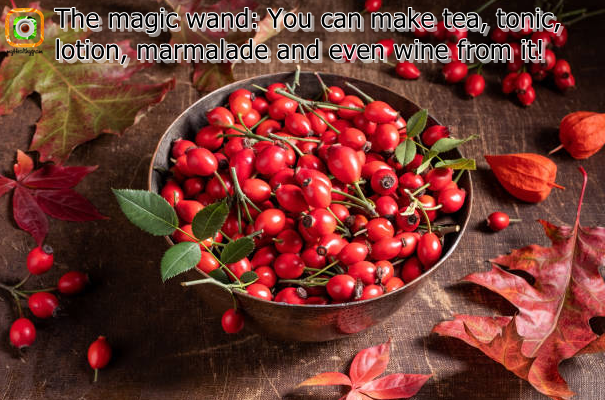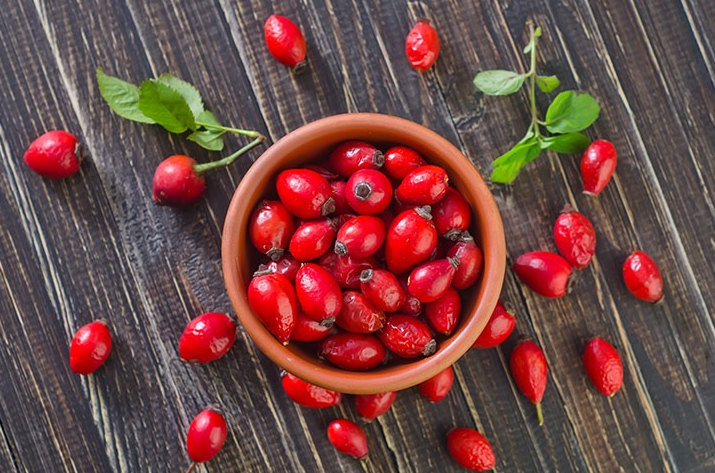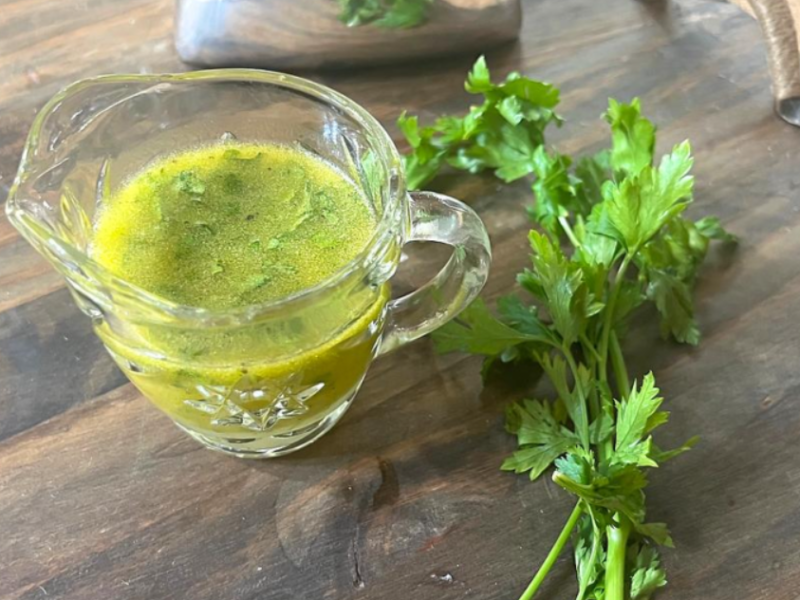Rosehip, rosehip, and wild rose are just a few of the common names for this priceless herb, without which the home pharmacy would be inconceivable.
Rosehip seeds contain between 8 and 10% fatty acids, with oleic, linoleic, and linolenic acids dominating. Vitamins C and K, carotenoids lycopene and beta carotene, invert sugar and sucrose, as well as pectins and tannins, are all abundant in rosehip.
It is many times more valuable as a result of these distinguishing ingredients. It can be used as a tonic, a vitamin drink to help with colds and flu, a mild diuretic, a mild laxative, or simply as a tea to enjoy. For enjoyment are the jam and marmalade that are traditionally prepared according to the recipes of our grandmothers.
Due to the pleasant and refreshing taste, the richness of vitamins and fruit acids, rosehip extracts and concentrates have found their place in the production of various soft drinks, the most famous of which is coke. When preparing these drinks, care is taken that the extracts are dark brown-red in color, with a pleasant sour taste and characteristic aroma.
Rosehip oil has a significant biological value due to its richness of different acids. It can be utilized as an active ingredient in preparations aimed at reducing inflammatory reactions on the skin, as well as for cosmetic purposes. Topically, the oil can be used to treat eczema, acne, and psoriasis, but it’s also fantastic for dry, extremely dry, and older skin. Rosehip oil has also been demonstrated to be advantageous to epidermal cells in studies. It is particularly beneficial to dry skin since it improves suppleness.
Like all other oils, rosehip oil is an emollient, that is, it increases the softness of the skin and makes it smooth. It is also great as a sunscreen. Packed in body lotions, baths, shampoos, lip balms and hand and nail creams, it highlights the effectiveness for every part of the body.
Tea rich in vitamin C.
Due to the richness of vitamin C, which is not lost during cooking, red rose tea is indispensable in the treatment of colds. It is especially recommended for fatigue, malaise, anemia, ie for all problems that occur as a result of vitamin C deficiency in the body.
It is also suggested that it be ingested for the purpose of blood cleansing. It has a positive effect on the digestive system as well as urine secretion without disturbing the kidneys. Rosehip tea is also useful for preventing sand buildup in the kidneys and urinary tract. It’s also used to treat inflammatory kidney and urinary tract conditions.
This plant’s petals are harvested during blossoming to make tea in addition to the fruit. Petal tea is used to treat hemorrhoids, diarrhea, and stomach cramps, as well as bleeding from the stomach, intestines, and lungs.
Interesting facts about the bar
The bar includes a lot of handy features. It is one of the world’s oldest plants. Archaeologists have discovered barley seeds dating back to the Neolithic period.
The rod was widely used not only in the Far East, the Caucasus, and India, but also throughout Europe several thousand years ago. The rod is nearly gone in Western and Central Europe now, although it is now farmed in North America.
The bar is high in vitamin A, P, and C, with 300 grams of berries providing the daily need for ascorbic acid. It is high in potassium, phosphorus, sodium, and calcium and magnesium, with 200 grams of berries providing daily amounts.
The bar is effective against typhus, abdominal pain, and other microorganisms that cause illness. Pectin is the most natural way to cleanse the body of toxins and poisons, and each berry has a lot of it. Rose hips are used to make syrup, jams, jellies, and juices because they are high in glucose and fructose.
Rose hips are used to make wine and vodka in Eastern Europe.




